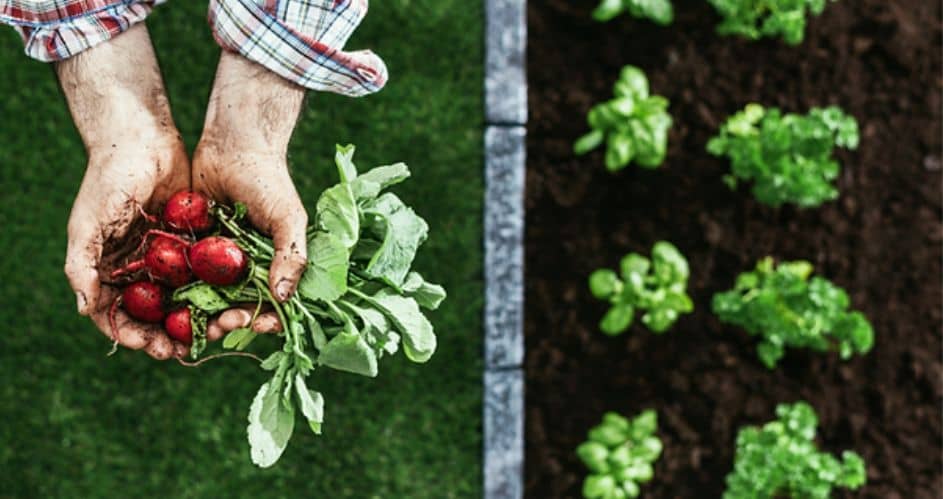
If you have a fair-sized garden, there is nothing to stop you growing organic fruit and vegetables and in this short article, we show you how.
Choosing a suitable section of the garden
If you can section off a corner at the back of the garden, this is the most suitable location for a grow patch. Of course, the soil must be of good quality and if it isn’t, order a truckload of topsoil and plough it into the existing ground.
Order a few sacks of manure and dig that in, which should provide the essential nutrients. This is the kind of job for disc chains, which break up the top few inches of soil, ready for sewing.
Farmers have been using disc chains for many years and a scaled-down version can be used to prepare small areas of ground for planting. If you have a shady part of the garden, this would be the most suitable for a vegetable patch, as strong sunlight might be too much for young sprouts.
Shade netting
It is never a good idea to leave your veg patch in direct sunlight, you can buy green netting and build a frame to cover the area. If you want to increase the shading, double up the netting; maybe a single covering would be ample.
Avoid using chemical fertiliser
If you want healthy, organic produce, resist the temptation to use chemical fertiliser. You can create your own compost heap by adding scraps of food and green waste such as grass cuttings, which will feed your patch all year round.
This will save you time and money and you and your family can enjoy healthy vegetables. You can discover what makes a good compost heap by researching online and keeping the right conditions is important for your compost corner.
What to grow?
Of course, there are many vegetables that you can plant, such as:
- Lettuce
- Cabbage
- Carrots
- Potatoes
- Parsnip
- Tomatoes
- Green beans
- Sweetcorn
- Cucumber
- Onions
- Radish
These are just some of the vegetables that you can plant and we recommend searching online to find out what vegetables are best suited for your property.
There are a lot of free resources to help you with such a project and with some TLC, your veggie patch will be very productive. You can use your ride-on mower and trailer to transport soil and manure, which is much easier than a wheelbarrow.
Hydroponics
Hydroponics is the process of growing plants without using soil as a medium; water is pumped around the system, feeding the plants and nutrients are added to the water.
You can find workable diagrams online that show how to build a hydroponic system, while YouTube hosts some great tutorials on how to build a hydroponic grow system.
Some growers use lights and set up an indoor grow room, which can work if the weather is unsuitable. Those who live in apartments can make good use of hydroponics, which allows you to grow indoors.
Practice makes perfect
Like anything else, growing organic produce is all about practice; the more you do it, the better the results, or at least, that should be the way it goes! After the first crop, think about what went wrong and make some adjustments, which should improve your yield.
You need to plant in rows by creating shallow channels and use seed packets to show what vegetables are planted where. Once seeds are planted, they need regular watering and some sunlight.
Tools and equipment
Growing vegetables does require a few hand tools; such as:
- Rake
- Hoe
- Spade
- Garden fork
- Watering can
You will also need a rotovator, a small machine that turns over the soil, making it loose and suitable for planting.
There is a lot of satisfaction to be gained from growing your own organic vegetables, not to mention the fact that you and your family will enjoy a healthy diet.
As you progress and enjoy a degree of success, you may wish to expand your area to accommodate more types of vegetables; if your garden is big enough, you could produce all the veg you need without having to buy from the supermarket.
If you have neighbours who grow their own vegetables, have a chat and they will likely be able to offer you some sound advice on how best to get started growing organically.
Here is some interesting Australian government information about organic produce, which might help you gain a better understanding of what organic produce is.
Start by drawing up a plan; test the soil to see what vegetables grow best, acquire the tools, prepare the ground and buy some seeds, then you can start at the right time of the year, which is spring here in Australia.